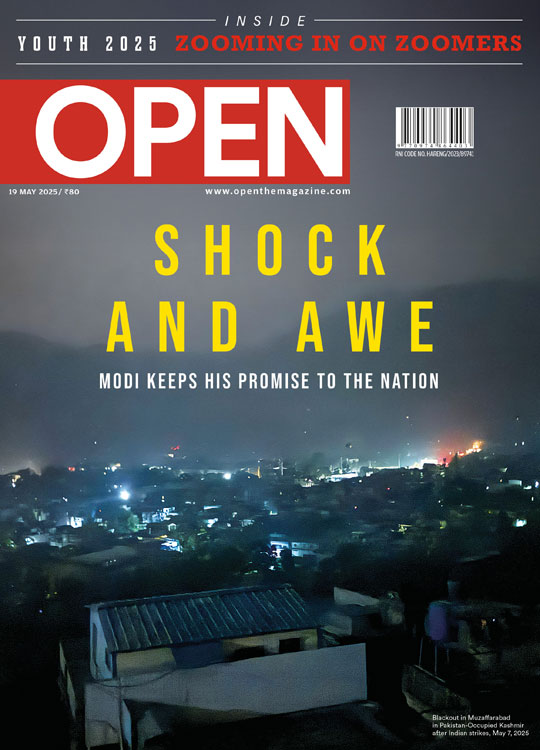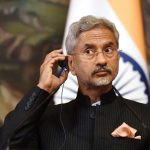Stream of New Consciousness: India Joins Online Revolution in Entertainment
As Netflix and Amazon expand into local markets
 Lhendup G Bhutia
Lhendup G Bhutia
 Lhendup G Bhutia
Lhendup G Bhutia
 |
07 Sep, 2017
|
07 Sep, 2017
/wp-content/uploads/2017/09/Netflix1.jpg)
In 2013, ONE OF the country’s largest television networks, Star India, got into an unheard-of deal with Salman Khan, paying him a jaw-dropping sum of Rs 500 crore to broadcast his films for the next five years, till the end of 2017. Star TV’s Executive Vice-President Hemal Jhaveri called it a “first of its kind contract signed by any actor in Indian showbiz” and “a mammoth and a complex deal which has been chalked out considering Salman’s box office success over the past few years”. Back then, TV channels were outdoing one another to land the biggest films with the biggest stars, offering huge sums, getting into bidding wars and signing multiple-film deals. And film producers were looking at television for a large chunk of their earnings.
Today, Salman Khan’s appeal and box-office clout, despite the failure of Tubelight, remains more or less the same. But the entertainment industry is changing rapidly. People who miss a film of his at the theatre no longer wait to catch it on TV. It is usually available—just a fingertip away and without ads— on a pirate website. Television deals have shrunk, with a newspaper report saying the price of satellite rights for Hindi films fell by nearly 40 per cent in 2015.
Last month, Khan’s production firm Salman Khan Ventures got into another deal (believed to be for the next five years), but this one was not with any entertainment channel. Under its terms, the future films of India’s biggest superstar will not be broadcast on TV after their theatre run, but instead will first be streamed digitally online. TV channels will get the film only two months after it makes its debut on Amazon Prime Video. The US-based company has not disclosed the sum it has spent to acquire these rights, but James Farrell, Asia Pacific head of Amazon Prime Video’s content division, has called it “one of the biggest star deals to have ever been done in the world”.
The expense involved is a “small fortune”, in the words of an Amazon executive. “You have to understand we are not just paying for the films. We are also paying to keep them away from TV [for two months].”
It also speaks of the fast-growing power of web streamers like Amazon and Netflix in a market like India, where movies are increasingly being watched on handsets via their apps. In roughly a year of their existence in India, the two market rivals have spent vast amounts of money signing up an impressive array of licensing deals with the who’s who of Bollywood, from its superstars to filmmakers and film studios, to stream their past and upcoming films. These include works that have just released and those still under production, like Sanjay Leela Bhansali’s ambitious period drama Padmavati, as also the films of Salman Khan and Shah Rukh Khan which are yet to even be conceived.
The KPMG India -FICCI 2017 report indicates India’s internet consumption, chiefly videos viewed on mobile phones, is exploding. Last year—with the arrival of a new telecom player and incredibly cheap or free data plans—was particularly revolutionary. This, at a time, as the study notes, when ‘television experienced slower growth due to a lackluster year for subscription revenues’ and ‘films had a disappointing year with a near flat performance as the core revenue streams of domestic theatrical and cable and satellite rights declined’. Dolly Jha, executive director of Nielsen India, notes in the report, ‘The average time spent by an individual on streaming videos has increased nearly nine times from two minutes a day in Q2 (second quarter of) 2014 to 18 minutes a day in Q4 (fourth quarter) 2016.’ In the next five years, India’s internet consumption via mobile phones is projected to double to 30 per cent from 15 per cent now, mobile video traffic is expected to grow 11.5 times, and the number of video-capable devices and connections in India to grow 2.2 times, crossing 800 million in number, says the report.
There is going to be a humongous mass of people hungry for entertainment in the coming years for whom their smartphone will be the primary screen. To capture this market, these streaming giants aren’t just acquiring Bollywood films but also competing with one another to get the country’s most interesting and well-known filmmakers and studios to develop new content in India—a series of edgy shows that go beyond the scope of the typical Bollywood routine, transforming both the content India produces and the way it is watched.
“There is a big revolution going on in the country. The market here [for digital fare] is currently the most competitive. But it is also the fastest growing in the world,” says Gaurav Gandhi, COO of Voot, Viacom 18’s digital streaming arm. “There are around 450 million internet users in India now, 400 million of them on mobile phones, out of which some 200 million consume videos on their phones. In all our estimates, going ahead (in the next four to five years), more households will have at least one streaming device than a TV set. It is going to go wild,” he says. “In the next few years, there is going to be two to three X (times) the number of people consuming mobile video content than there is now.”
A few months ago, Shah Rukh Khan, who has signed a deal with Netflix to stream his past and future films, spoke about the disruptive potential of the new online invasion. “When I [started my career] 25 years ago, I wanted to make the films I wanted to, but you have to be part of the system,” Shah Rukh Khan told a gathering of journalists while hosting Brad Pitt at an event in Mumbai to promote the Netflix-produced film War Machine. “[But] Netflix can be a great opportunity [which can] offer unknown or upcoming directors more chances … In India, every household has a singer, but I think every household also has a filmmaker.”
For many filmmakers who have signed up to produce content for these shows, it is the absence of censorship that excites them the most
“If I want to blow up heads onscreen,” Karan Anshuman says, “you know I [now] can.” He is one of the new breed of filmmakers who are hedging their bets by going bullish on streaming services. Many traditional filmmakers might have a sentimental— and even reverential—attachment to cinema halls, but Anshuman will tell you, “Oh, I don’t care… I don’t care if it is pirated or watched on a cellphone. What I want is the largest possible reach for my film.”
Before Anshuman turned filmmaker with the 2015 film Bangistan, which he followed up recently with Amazon Prime Video’s first series titled Inside Edge , he had another career: that of a film reviewer with a well-known Mumbai tabloid and as a Bollywood provocateur. He was the brains behind The Ghanta Awards, India’s answer to the Razzies that held a public vote to ‘honour’ the absolute worst of Hindi cinema. Very few of those who won these awards ever showed up at the ceremony to collect them, but there were exceptions like Sonam Kapoor (who won a ‘WTF Was That’ for Mausam in 2012) and Riteish Deshmukh (awarded a ‘That’s Anything But Sexy’ for Grand Masti in 2014).
Anshuman’s Inside Edge, a sleekly produced series under the Bollywood banner Excel Entertainment, is a behind-the-scenes drama about a cricket league modelled on the Indian Premier League. Excel Entertainment is developing a number of shows, including one about two wedding planners which is being helmed by Zoya Akhtar and Reema Kagti. But for now it’s the cricket show that has made audiences sit up. It has an opening scene that must surely rank among the most unconventional in Indian entertainment. There is a tense T20 match going on, while the batting team’s star player, hidden somewhere in the stadium’s pipe-works, snorts a line of cocaine off the bare back of a blonde- wigged cheerleader as he gets it on with her. When he launches into a jeremiad against a team-member in the match—streaming live on his phone—amidst all the other things he is preoccupied with, the woman underneath serves him a reminder: “Don’t talk, just fuck.” Just the number of times the word ‘fuck’ is uttered by the show’s characters across the season, violated by neither a beep nor blip, can feel liberating to a ear that’s unaccustomed to it in Indian serials and movies .
For many of the filmmakers who have signed up to produce content for these shows in India, it is the absence of censorship on these platforms (or the larger leeway in comparison with other entertainment outlets) that excites them the most.
The filmmaker Anurag Kashyap, at a recent event to promote his Netflix debut Sacred Games, said he will be able to express himself unhindered for the first time. Raj Nidimoru, who directs Bollywood films along with Krishna DK (the duo are now developing a spy series for Amazon Prime Video), says he often finds it hard to recognise some of his films that appear on TV. “I see Go Goa Gone [directed by them and believed to be Bollywood’s first zombie film] on TV sometimes, and it’s like half the length of its original version,” Nidimoru says. “Anytime there is a little blood, the screen turns black and white. It’s embarrassing.”
The show Inside Edge has performed so well, Amazon claims, that it justifies the company’s faith in the Indian market, to capture which it is keen to invest in several more original Indian shows. Although Amazon does not disclose the actual number of viewers, it claims that the cricket show became its most watched series in India shortly after its release, which means it trounced all its global shows available to online subscribers in the country. The streaming giant has already given Excel and Anshuman its nod to develop another season. “India of course loves movies,” says Vijay Subramaniam, director of content at Amazon Prime Video India. “But what we have realised is that there are so many stories waiting to be told here. TV tends to programme in a certain way. But because we cater to so many different segments, we can take on different types of shows.” How does the company locate these stories? “There are people who approach us wanting to work with us,” Subramaniam says. “But we are also going out there actively seeking out those stories and people who can tell them.”
The movement from single-screen to multiplexes transformed Bollywood content. The shift to a handheld screen will probably herald a larger change
WHEN THE IDEA of what would eventually become Inside Edge first began to occur to Anshuman, he says he knew it would not work either as a film for a theatre release or as a TV show. “The scale had to be big. And there is no single protagonist really in the show. There are equal scenes and dialogues for everyone. You can’t do a film like that in India. And of course there are no such opportunities on TV here,” says the filmmaker. “So it remained at the back of my mind and I was kind of waiting for things to fall in place.”
“In films here, you have the censor board to deal with, which is such a pain. Pahlaj Nihalani is not there now. But the concept of censoring remains,” says Anshuman, who is now working on another Amazon show titled Mirzapur, a gangster epic that some in the press have called ‘an Indian Narcos’ (the popular Netflix title). “I can blow up heads on screen if I want to, or do things I can’t get away with in TV or films. There is freedom, real true freedom.”
A majority of Hindi films, both large and small-budget ones, some of which starred the industry’s most bankable superstars, have tanked this year. All of Shah Rukh Khan’s films fared poorly; Ranbir Kapoor delivered a large dud; and Salman Khan reportedly had to compensate the distributors of Tubelight to the tune of Rs 32.50 crore for its box-office failure. Big-budget Bollywood films often get a lot of flak for all that they imply about filmmaking in India, but the truth is that the industry depends on these few large films every year to lift it out of a financial morass. “There is a recession-like phase going on in the industry right now,” says Richa Chadha, an actor. “Everything is failing. All the films, big stars, big budgets. The taxes are so high, the number of screens so limited. Demonetisation has had a big impact here… Back in the 1980s, the Pakistan film industry went through a shutdown. I’m afraid if we don’t do something, cinema might die here too.”
THE BUSINESS OF Bollywood films, as Anshuman points out, has screwed economics. There are at least four or five movies that get released every week, while the number of film screens is limited. The competition is getting even more fierce with several Hollywood films beginning to do well here. And almost all the films are dependent on their opening weekend for profits. “There is not enough star power, not enough screens,” he says. “All the films are trying to pander to everyone’s taste for success, and it doesn’t work. Look at the recent Marathi films. They are so much better. Why do you think they are succeeding? That’s because they are not trying to talk to everybody.” When one makes movies or serials for digital audiences, Anshuman says, you don’t have to cater to everyone. Digital shows of various types can all be there, available on an app’s menu, and each one will find its own audience.
When Chadha was shooting for Masaan in Varanasi, she realised how poorly the current model of film distribution services several distant parts of India. “People were still watching Aatank [a Bollywood film of the 1990s] and DDLJ [Dilwale Dulhania Le Jayenge ]. And there would be only men going to watch these films,” she says. “And the number of screens for new releases tends to be so limited that for a guy in Vapi to watch a Masaan, he will have to travel all the way to Ahmedabad to catch it. And even there, it will be on for only some shows.” When Gangs Of Wasseypur: Part 2 was released, a film she was part of, despite the favourable press coverage, it only got a window of about five days of business time before a Salman Khan film (Ek Tha Tiger) took over theatre screens. “It is like an election, you know,” she says, “Each film eats into another’s vote share. And sometimes the whole business model is so screwed, the cost of making a film will be less than the cost of promoting it.”
The entry of Netflix and Amazon in an already overcrowded market of more than 20 online video service providers in India has the potential to radically alter the entertainment scene. “It has become really very interesting in the last one-and-a-half years. Everyone is really upping their game,” says Aroon Deep, who writes about streaming services at Medianama. A majority of these online video services in India are mostly free and ad-supported digital streaming arms of established TV networks and studios which stream content from their own networks. Until now, online video consumption has all been about sports event streams and shows that people have missed on TV.
All this digital content of sports streams and catch-up TV, as Voot’s Gandhi points out, is owned by just a select few networks, like Star India, Viacom or Sony, all of which have their own streaming services. So Netflix and Amazon have to start from scratch, acquiring the digital streaming licences of films and creating original content of their own.
Unlike the others, Netflix and Amazon are subscription- based models. Netflix has positioned itself as a premium service, charging a minimum Rs 499 for a month’s access to its library online. When Netflix’s founder and CEO Reed Hastings visited India earlier this year, he declared, “There are around 300 million smartphone users in India. But we are targeting mostly the high end—10 or 20 million—for whom our pricing is not a problem.” In comparison, Amazon Prime, which does not rely on its video service for its profits but uses video content as a way to lure more e- commerce customers, offers its library of content at just Rs 500 for an entire year. Deep says, “The way [it has positioned itself], it looks almost irrational to not take an Amazon Prime subscription.”
There is going to be a humongous mass of people hungry for entertainment for whom their smartphone will be the primary screen
Increasingly, more services are trying to introduce a subscription- based model to go along with their free, ad-supported content. Voot, which is believed to be the third largest video streaming service in India (after YouTube and Hotstar), with almost 25 million active monthly users, is working towards placing some of its content behind a paywall. “I think both these models [ad- supported and subscription-based] have a future. And we want to dabble in both,” Gandhi says. Hotstar also has a subscription model where some of its premium content, like the latest Game of Thrones episodes, can be accessed on paying a fee.
Gandhi believes in the early part of the digital video revolution, because most content will be consumed via mobile phones, the handheld device will have an impact on the way stories are told online. “On the phone, there are going to be multiple distractions. That will have to be taken into account. The storylines will be simpler, not like those seen in some of the foreign shows. They will probably also be like 20 minutes in length,” he says.
Although several media reports claim that Amazon Prime Video currently has about 9.5 million subscribers, and Netflix has around 4.2 million, these numbers might be overestimated. Deep filed an RTI application earlier this year to the Large Taxpayer Unit in Bangalore, where Netflix has been filing taxes since December last year, to find out exactly how much tax Netflix pays. The amount turned out to be Rs 2.20 crore for January 2017. By taking into account the service tax rate that Netflix charges on its most and least expensive subscription plans, he arrived at an estimated range of between 200,000 and 300,000 subscribers. “Netflix never shares this type of information, at least its India numbers. And I just wanted to find out what the numbers are really like,” he says.
According to various media reports, both Netflix and Amazon have set aside Rs 2,000 crore this year to acquire and produce content in India. Netflix has announced a few shows it is producing— a roster that includes an adaptation by Anurag Kashyap and Vikramaditya Motwane of the book Sacred Games, another adaptation of the Aravind Adiga book Selection Day, and a third project to be scripted by one of the writers of Quantico. Amazon meanwhile has announced a total of 20 shows, from reality TV programmes to conventional dramas. Such a large investment is already beginning to drive up the budgets of these shows. Most digital shows, which are anyway considered a lot more expensive to produce on a minute-to-minute basis compared to conventional TV shows, used to spend around Rs 75,000 per episode. “Now the budgets, depending from project to project, have gone up to, like, Rs 1.5 to Rs 2 crore on average,” an industry insider says. “The likes of Netflix and Amazon are spending an average of Rs 8 crore on just [a single] season of a few shows. The budgets are crazy. These are like the budgets of a small feature film.”
For the likes of Netflix now, it is vital to expand beyond the US market, which is gradually reaching saturation point, into nascent internet markets in territories like India. As Hastings said on his visit, the country is “hugely important” to Netflix because “it’s one of the strongest internet markets”. Citing his words today, a Netflix spokesperson says, “We have seen strong growth compared to [other] Asian markets. India has a huge appetite for entertainment, and we’ve seen plenty of fan-enthusiasm here. On the content front, we are doubling down on Indian investment.”
The biggest impact is likely to be on TV. In the US, Netflix’s popularity has coincided with the concept of ‘cord-cutting’, the cancelation of cable and satellite TV subscriptions that saw decades of high growth. People are dropping the thick bundles of channels that are rarely watched in favour of on-demand digital viewing. Referring to this phenomenon, Gandhi says, “India is going to turn from a land of broadcasts to a land of uni-casts.” The film Lipstick Under My Burkha, which had some difficulty securing a theatrical release and had to undergo some cuts before it finally reached screens, is now available on Amazon Prime Video without any snips. It has never appeared on TV and probably doesn’t need to. Television has a limited programming ability, as Subramaniam explains. The medium usually restricts itself to broadcasting only those films that can garner the largest number of eyeballs. A streaming service, in contrast, has a far wider catchment area. Since its library is permanently stored on the internet, all sorts of content, both mainstream and niche fare, is available to every kind of viewer at any given moment. And a film like Lipstick Under My Burkha, which managed to somehow get through to Indian theatres but failed to show up on TV, is now watchable online.
“That’s what’s happened to TV here,” says Gandhi, referring to the manner in which TV ratings are captured and how channels cater to segments of an audience reflected in those ratings. “By sheer statistics, TV will always have to cater to the lowest common denominator, what the maximum number of people in the middle watch. The fringes will always get left off because they will never be projected [in the TV ratings system]… That means some 20 million people in India and their tastes will get left off. So for a lot of people like you and me, we have stopped watching TV in India. We won’t consume any of TV’s scripted shows. We might do some sports, maybe a reality TV show, watch some news, but then we move on in life.”
According to a Netflix spokesperson, the habits of consumers in India are already observed to be changing. “For years, consumer lives had to fit around television schedules… A consumer used to have to spend months following a TV series, but now we see Indians finishing a series in just three days. From mass programming, entertainment is moving towards personalised experiences curated for each individual viewer.”
Anshuman’s prediction is dire. “The time of linear TV is over,” he says. “There used to be a time when our parents used to tell us to stop watching so much TV. Now here we are, telling them, ‘Come on stop watching that TV’.” Gandhi, however, believes that given how cheap cable subscriptions are in India, both distribution avenues will co-exist. But the amount of time spent on TV will decrease. In the near future, as TV technology and data speeds improve, TV will take on a hybrid shape, he says, where people will watch a lot of digital content on the TV set itself.
And what will happen to the nature of the Bollywood film? Anshuman claims his experience shows that the format of a digital series allows for a lot more depth and nuance, more than a two or three-hour-long film will ever allow. Chadha, who has a significant role in Inside Edge, says one rarely gets material like she did for this particular show. “It is like a big leap from film,” she says. “There is no spoon-feeding happening. You get to play a character very differently.”
The business of Indian cinema is largely event-driven now. The success of a film is not dependent on the ‘jubilee’ runs of the past, but on its opening weekend collections. Almost every film is now a grand production of spectacle and action that seeks to wean audiences away from their small mobile screens. Perhaps it is the nature of the times, the competition among themselves on one hand and with mobile entertainment on the other. The tastes of young audiences wield a vast influence on the type of films that get made. But these preferences, if one notices, are now increasingly moving towards online shows. An incredible number of status updates, tweets, hashtags, spoilers and blogs appear to be floating about on this ocean of digital content, all about twists and turns of the latest shows and almost nothing about films.
In India, the site of a film’s viewing is known to make an impact on what is made. The movement from single-screen theatres to multiplexes a decade or so ago transformed Bollywood content to an extent. The shift to a handheld screen will probably herald an even larger change. Various forms of entertainment will survive, but you might see filmmakers switching from one format to another, depending on the story they have in hand.
When Nidimoru and Krishna first began developing the idea of what is going to be their first Amazon show (which they describe as ‘James Bond in Chembur’, a type of spy film which won’t be an over-the-top cliché of the spy genre but a more realistic portrayal of an agent from a middle-class Indian family), they say they soon realised it would need a format that was longer than a single film’s time span. “So we kept it aside for a bit, and then Amazon came and it just fit in so well. All they tell you is, ‘Do what you feel’. And there are no guidelines, at least not till now.”
Nidimoru, Krishna and three other writers have been sitting down together to brainstorm and work out the nitty-gritties of the script. “At our first writing session, we were all just going wild. We were putting in all sorts of gaalis and abuses. Just because you could now with this format, you know. And then, from the next session onwards, we just started deleting all that.”
Why? “We realised it really wasn’t required. The story—whatever the format—dictates things.”

/wp-content/uploads/2025/05/Cover-War-Shock-1.jpg)













More Columns
On Being Young Surya San
Why Are Children Still Dying of Rabies in India? V Shoba
India holds the upper hand as hostilities with Pakistan end Rajeev Deshpande